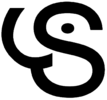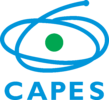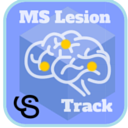Difference between revisions of "Documentation/Nightly/Extensions/MSLesionTrack"
Acsenrafilho (talk | contribs) |
Acsenrafilho (talk | contribs) |
||
| Line 25: | Line 25: | ||
{{documentation/{{documentation/version}}/extension-section|Extension Description}} | {{documentation/{{documentation/version}}/extension-section|Extension Description}} | ||
[[Image:MSLesionTrackExtension-logo.png|left]] | [[Image:MSLesionTrackExtension-logo.png|left]] | ||
| − | + | Multiple sclerosis (MS) is a degenerative neurological disease growing relevance. The segmentation of lesions on magnetic resonance imaging (MRI) and its boundaries with healthy tissue remains a challenge for correct diagnosis of MS patients. Currently, many imaging methods Magnetic resonance imaging have been applied to this problem, but with success modest. In this study we aim to multimodal application of MRI for evaluation robust and effective of MS lesions as well as appearing white matter healthy (NAWM). Weighted images T1, T2 and FLAIR are widely used for the diagnosis of disease and recently, diffusion tensor imaging (DTI) add another source of useful information for the diagnosis of MS. However, main barrier is the low signal to noise ratio (SNR) existing in such | |
| − | + | imaging techniques, which eventually diminish the efficiency of the method of segmentation. We propose the application of anomalous anisotropic filtering (ADF) | |
| − | + | an important tool in improving the SNR and thus increased precision segmentation and detection of MS lesions and NAWM. This project sees one multicentric interaction and the use of innovative and optimized tools for the current lesions targeting challenge of patients with MS. the improvement is-searching | |
| − | + | definition of brain tissue separation, finer detection of the disease and the establishment of a functional computational tool for clinical application in the diagnosis of MS. | |
| − | |||
| − | |||
| − | |||
| − | |||
| − | |||
| − | |||
| − | |||
<!-- ---------------------------- --> | <!-- ---------------------------- --> | ||
{{documentation/{{documentation/version}}/extension-section|Modules}} | {{documentation/{{documentation/version}}/extension-section|Modules}} | ||
| − | *[[Documentation/{{documentation/version}}/Modules/ | + | *[[Documentation/{{documentation/version}}/Modules/BrainExtractionTool|Brain Extraction Tool]] |
| − | *[[Documentation/{{documentation/version}}/Modules/ | + | *[[Documentation/{{documentation/version}}/Modules/BrainTissuesMask|Brain Tissues Mask]] |
| − | *[[Documentation/{{documentation/version}}/Modules/ | + | *[[Documentation/{{documentation/version}}/Modules/MSLesionTrack|Multiple Sclerosis Lesion Track]] |
<!-- ---------------------------- --> | <!-- ---------------------------- --> | ||
{{documentation/{{documentation/version}}/extension-section|Use Cases}} | {{documentation/{{documentation/version}}/extension-section|Use Cases}} | ||
[http://plastimatch.org/data_sources.html Sample data] to use with modules. | [http://plastimatch.org/data_sources.html Sample data] to use with modules. | ||
| − | <gallery widths=" | + | <gallery widths="400px" perrow="2"> |
| − | Image: | + | Image:DTI_FA_wm_segmented.png|DTI-FA map with the white matter segmented |
| + | Image:DTI_FA_lesions.png|MS lesions segmented from the DTI-FA maps (using statistical approach) | ||
</gallery> | </gallery> | ||
| Line 54: | Line 48: | ||
<gallery widths="200px" perrow="4"> | <gallery widths="200px" perrow="4"> | ||
| − | Image: | + | Image:mslesiontrackextension_tutorial_ppt.png|[http://forge.abcd.harvard.edu/gf/download/frsrelease/110/1023/3D_Slicer_Plastimatch_Registration_Tutorial.ppt Download tutorial] |
</gallery> | </gallery> | ||
| Line 63: | Line 57: | ||
<!-- ---------------------------- --> | <!-- ---------------------------- --> | ||
{{documentation/{{documentation/version}}/extension-section|References}} | {{documentation/{{documentation/version}}/extension-section|References}} | ||
| − | * | + | * |
<!-- ---------------------------- --> | <!-- ---------------------------- --> | ||
Revision as of 22:43, 22 April 2016
Home < Documentation < Nightly < Extensions < MSLesionTrack
|
For the latest Slicer documentation, visit the read-the-docs. |
Introduction and Acknowledgements
|
Acknowledgments:
This work was partially funded by CAPES and CNPq, a Brazillian Agencies. Information on CAPES can be obtained on the CAPES website and CNPq website | |||||||||
|
Extension Description
Multiple sclerosis (MS) is a degenerative neurological disease growing relevance. The segmentation of lesions on magnetic resonance imaging (MRI) and its boundaries with healthy tissue remains a challenge for correct diagnosis of MS patients. Currently, many imaging methods Magnetic resonance imaging have been applied to this problem, but with success modest. In this study we aim to multimodal application of MRI for evaluation robust and effective of MS lesions as well as appearing white matter healthy (NAWM). Weighted images T1, T2 and FLAIR are widely used for the diagnosis of disease and recently, diffusion tensor imaging (DTI) add another source of useful information for the diagnosis of MS. However, main barrier is the low signal to noise ratio (SNR) existing in such imaging techniques, which eventually diminish the efficiency of the method of segmentation. We propose the application of anomalous anisotropic filtering (ADF) an important tool in improving the SNR and thus increased precision segmentation and detection of MS lesions and NAWM. This project sees one multicentric interaction and the use of innovative and optimized tools for the current lesions targeting challenge of patients with MS. the improvement is-searching definition of brain tissue separation, finer detection of the disease and the establishment of a functional computational tool for clinical application in the diagnosis of MS.
Modules
Use Cases
Sample data to use with modules.
- DTI FA wm segmented.png
DTI-FA map with the white matter segmented
- DTI FA lesions.png
MS lesions segmented from the DTI-FA maps (using statistical approach)
Tutorials
- Mslesiontrackextension tutorial ppt.png
Similar Extensions
N/A
References
Information for Developers
| Section under construction. |




